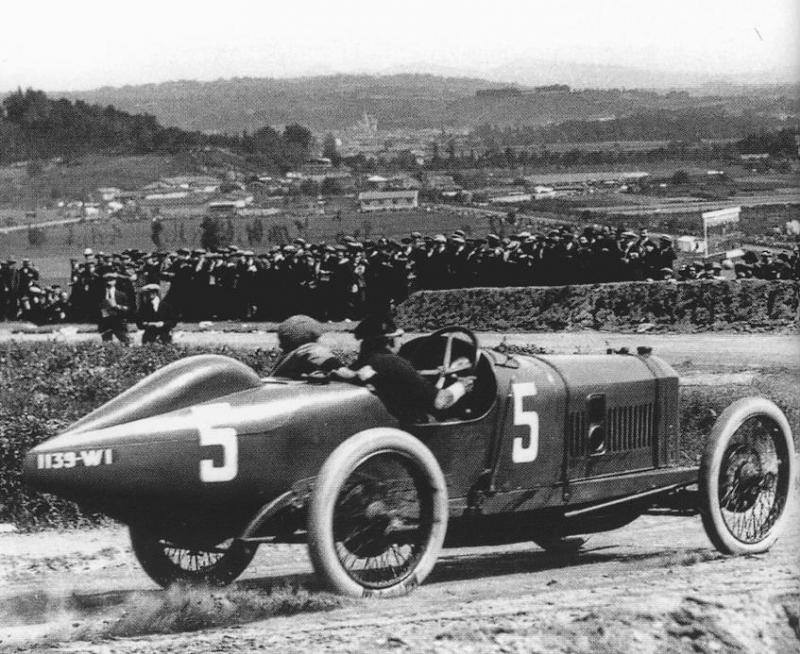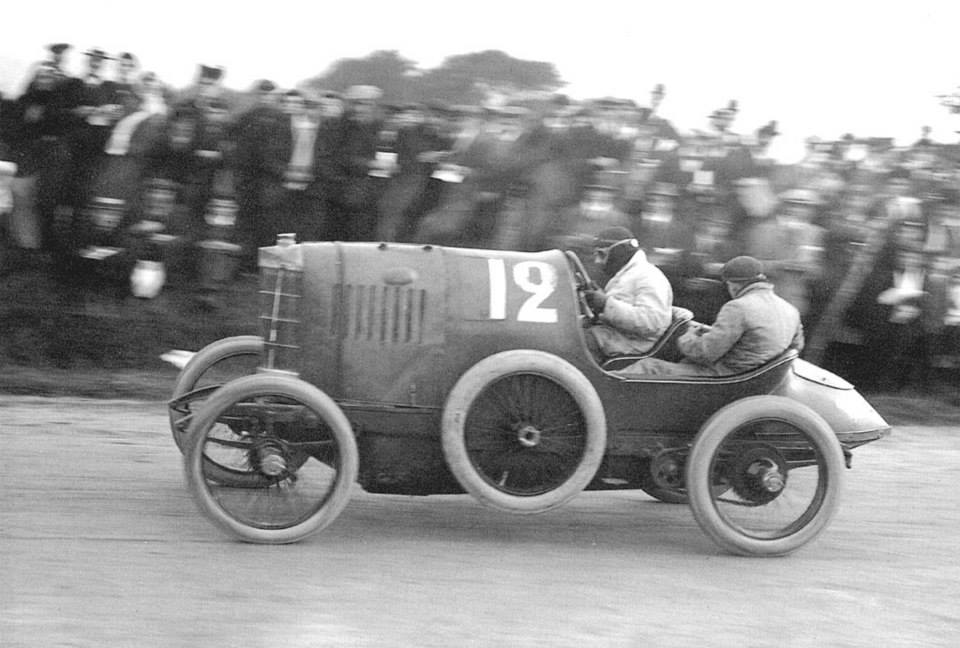Georges Boillot, the moustached road musketeer
Just over three and a half decades ago, a certain movie character portrayed by the swashbuckling Steve McQueen put into words what most racers ever since the dawn of car racing itself felt. ‘’Racing is life.
Just over three and a half decades ago, a certain movie character portrayed by the swashbuckling Steve McQueen put into words what most racers ever since the dawn of car racing itself felt. ‘’Racing is life. Anything that happens before or after is just waiting’’, he said, questioned about the reasons that push drivers to take unthinkable risks in the pursuit of greatness on the track. Throughout history, we’ve been fortunate enough to witness some bona fide daredevils get hold of the steering wheel of a car and push it far beyond its conceivable limitations. Senna, Schumacher, Fangio, Ascari or Clark ar just some of these emblematic figures. But, even before they were born, in the early days of motoring, a certain moustached warrior, usually driving inferior machinery, set the bar so high that nobody could beat him and, maybe, some of his accomplishments will never be bettered in their greatness.
The first man that reached for the stars and stood unyielding above them until his exacerbated audacity took him down. In regards of the cornerstone qualities that describe a pure racer, only Rosemeyer can bear comparison with him and in terms of technical skill he could be second only to Jack Brabham.
How good was Georges Boillot?
First of all the numbers: Between 1912 and 1914 he took part in 6 majorraces, winning three of them and retiring from the other three due to technical maladies after enjoying a dominant lead despite having to work with inferior machinery.

Never had Georges Boillot driven as he drove that day, never had a car and a driver seemed so intimately a part of one another Sammy Davis, talking about Boillot's run in the 1914 GP of France
He won the first Grand Prix of his career, slashing seven minutes off the deficit on the first day and clawing back nine more the second day when torrential rains hit the course. All that in the face of the quicker Fiat of David Bruce-Brown who was unable to challenge for victory despite the fact that Boillot lost his top gear, which meant he had to stop 20 minutes. The unscheduled pit stop seemingly left Boillot undeterred since he still won the race by a staggering 13 minutes.
A couple of years later he took the pole at Indy on his first appearence with a record-setting flying lap. A flat meant he had to come back from as low as 29th on race day, which he did. A second flat again lost him a bunch of spots sending him back to 15th but he again managed to snatch back the lead where he remained until the car expired altogether.
Finally, on his last tour-de-force, he went 35s faster than Mercedes-Benz driver Max Seiler`s benchmark lap, despite of the fact that he had to stop for a tire check-up!

Some possessed a natural-born sense for the ragged edge of grip, magical car control and a huge dose of speed. But they lacked an unbreakable psychic, the ultimate winner’s mentality and, above all, total confidence in their own abilities. Here’s where Georges Boillot stands alone. Never did a racer believe in his own star of good luck with more fervor or in a more intimidant manner, so much so that he sometimes went beyond common sense.
It’s without a shadow of a doubt that there was no driver, and here we include Nuvolari, Senna and Schumacher as well, as smug or who displayed his superiority in a manner lacking so much in elegance.
Being a full-on showman, he loved to play with the crowds, always targeting the stars which he reigned for three seasons, in a manner never before seen and that was never equalled. But this is just because his genius permitted it. His primordial qualities came together to shape a style that oozed of fearlessness, but was only on the surface one of all-out attack ; a style that only nowadays can be fully understood as a great deal of archive material was made public on the centenary of the 1913 and 1914 GP’s.

Boillot always seemed to dance with the devil in the manner of which no other driver before or after him could. His audacity stood by him as he moved from cars to fighter planes, his death while battling five enemy planes proving it
The mid and low speed corners are those that always make the difference. That’s because such turns require a perfect coordination of the leg, hand and eye. As such, the line through the corner must be ably picked so as not affect the road demeanor of the car, nor the maximum speed in the apex point.
Boillot constantly brakes later than anyone else in period („I was eating them alive on braking” he would say in 1914 at Lyon) but he doesn’t apply the brakes while also maintaining a straight line, choosing instead to start turning in before the so-called ideal line would dictate him to do ; basically braking hard on a bent trajectory. Driving on the edge, he positions the wheels closer than anyone to the road’s limits (be it a fence, a tree, a ditch or a boulder), balancing his way through the corner by expertly applying minute steering, throttle and brake imputs in an overall style that somewhat resembles that of Michael Schumacher, albeit in an early interpretation.
This way he manages to keep a tighter line on his way out, cutting through the bend with the back only rarely having a mind of its own and never losing speed. Since he applies the gas earlier than, say, Jules Goux, his top speed on the straight bits of road is invariably higher (by 3 km/h at Amiens in 1913 and by twice as much at Lyon in 1914).
This menacing driving style which is otherwise unthinkable for his rivals is made possible by a trully unique combination of a sixth sense in feeling the limits of grip, a sublime car control and unrivalled quantites of self-belief.
Still, there is a sense of method in all this madness, something that the motoring journalists of the time rapidly picked up. They saw the way Boillot would often wait in the heels of his rivals, applying the critical hit towards the second half of the race. This is exactly how things went down at Dieppe in 1912, the one on the receiving end being Bruce-Brown, his place being filled by the Delage squad a year later and by team-mate Goux on countless other occasions.

. Only at Lyon in 1914 did Boillot properly get angry, launching himself like a bat out of hell in an unthinkable battle, the likes of which we’ve never seen before or since.
It’s every driver’s dream to be able to brake the last going into a corner and be able to get out of it quicker and accelerate first without affecting the speed through the apex. Few could approach this ideal without ruining the slight balance of a car that’s on the edge between hero and zero. Far fewer could do it so often and by giving such a visible sense of superiority compared to their rivals.
From this point of view, Georges Boillot can stay undoubtedly shoulder-to-shoulder with the likes of Nuvolari, Rosemeyer, Clark or Senna as one of the titans of this discipline. He was the first to fully grasp the divine craft of precision driving, bringing the whole world to his fingertips.

Originally by V. Raducan in Romanian, translated and further adjusted by myself
The sources for this article are too many to list above, including countless period newspapers as a number of articles written about Georges Boillot by well-known motoring journalists like Mark Hughes or Paul Fearnley


Comments
it’s spelled musketeer, sorry I had to be that douhe, my OCD kicked in yo! None the less a good read.
I can’t imagine how crazy people must have thought drivers like this were back then. Such outcasts of society.
Moustaches rock!!!
Btw very nice read